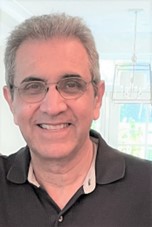Real Time and Sparse Reconstructed Radar Imaging Through Stratified Media
The problem of imaging of objects within or through multilayered dielectric media appears in many areas, including those in ground-penetrating radar (GPR) imaging, through-the-wall radar imaging (TWRI), intra-wall and subsurface imaging, and medical imaging. These general areas cover many important defense and civilian applications such as those in counterterrorism and law enforcement operations, firefighting, earthquake rescue missions, detection of buried subsurface objects and minerals in GPR, millimeter wave imaging of concealed weapons and contraband carried by personnel, to name a few. In many situations, however, the dielectric media induce shadowing effects on targets, resulting in image degradation and errors in geo-locating or, possibly, complete masking of targets. Furthermore, in most practical situations the imaging of targets should be done in real-time, requiring the development of fast data acquisition schemes as well as highly efficient microwave imaging techniques that can fully account for wave propagation through various dielectric layers or walls.
In this lecture, a comprehensive overview of various image reconstruction techniques for objects in stratified media will be given for both SAR-based and multiple-input multiple-output (MIMO) based systems, and for both real-time imaging and sparsity-based imaging scenarios. For the former, we will describe the use of efficient 2D and 3D Diffraction Tomography (DT) techniques which use first order Born approximation together with successive implementations of spatial fast-Fourier transform (FFT) and inverse-FFT (IFFT), to arrive at high-resolution images. Such fast-imaging techniques, however, do not address the problem posed by long data acquisition time associated with most microwave-imaging scenarios. To address this problem, assuming a sparse target space, one can resort to the use of Compressive Sensing (CS) to significantly reduce the number of antennas and/or collected frequency points. In our implementation of CS, the wall or multilayered media effects are accurately and efficiently accounted for in the sparse-image reconstruction through the use of approximate expressions for the Green’s functions of multi-layered lossy dielectric medium. In particular, the use of total variation minimization (TVM) and its advantages over the l1-norm minimization, which is often used in the standard radar implementation of CS, will be detailed. Numerical and experimental results for DT-based and CS-based radar imaging in various GPR and TWRI scenarios will be given in the presentation.
Date and Time
Location
Hosts
Registration
-
 Add Event to Calendar
Add Event to Calendar
- B 600.16, la Galerie Rolland
- 2500 Chem. de Polytechnique
- Montréal, Quebec
- Canada H3T 1J4
- Building: Pavillon Principal
Speakers
 Prof. Ahmad Hoorfar of Villanova University
Prof. Ahmad Hoorfar of Villanova University
Prof. Ahmad Hoorfar
Biography:
Ahmad Hoorfar is a professor of electrical and computer engineering, the ECE department’s graduate chair, and the founder and director of Antenna Research Laboratory at Villanova University. He received his B.S. in electronics engineering from the University of Tehran and the M.S. and Ph.D. degrees in electrical engineering from the University of Colorado Boulder, His research contributions over the years have covered areas in electromagnetic field theory, numerical electromagnetics,
multifunction printed and low-profile antennas, metamaterial media and surfaces, inverse scattering, microwave sensing and imaging, and stochastic optimization methods. He has been a pioneer in development and applications of evolutionary and global algorithms in electromagnetics, development of electromagnetic-based techniques for through-the-wall radar imaging (TWRI) and ground penetrating radar (GPR), compressive sensing applied to GPR and TWRI, and the use of the mathematical concept of space-filling curves in design of electrically small antennas, RFID tags, artificial magnetic conductors, and metasurfaces.
Dr. Hoorfar was the recipient of Villanova University’s Outstanding Faculty Research Scholar Award in 2007, and the recipient of Philadelphia section’s ‘IEEE chapter of the year award' for his leadership in chairing the AP/MTT joint chapter in 1995. His students have won top prizes in student best paper competitions at several IEEE and other international symposia, He has served on the review board of various IEEE and other technical publications, and has also been on the technical program committees of numerous international symposia and conferences on antennas, microwaves, radar, and remote sensing in the last thirty years. He spent his sabbatical leaves in 2002 and 2009 at NASA’s Jet Propulsion Laboratory (JPL) in Pasadena, California, where he contributed to the development of a general optimization code for design of feed horns for NASA’s deep space communication network.
Dr. Hoorfar is a Life Fellow member of IEEE, a member of International Radio Science Commission B, and an elected member of the Franklin Institute Committee on Science and the Arts. He is a Distinguished Lecturer of the IEEE Antennas and Propagation Society (AP-S) for 2023-2025 and has also been serving as the chair of the 2023 IEEE AP-S paper award committee.
Email:

